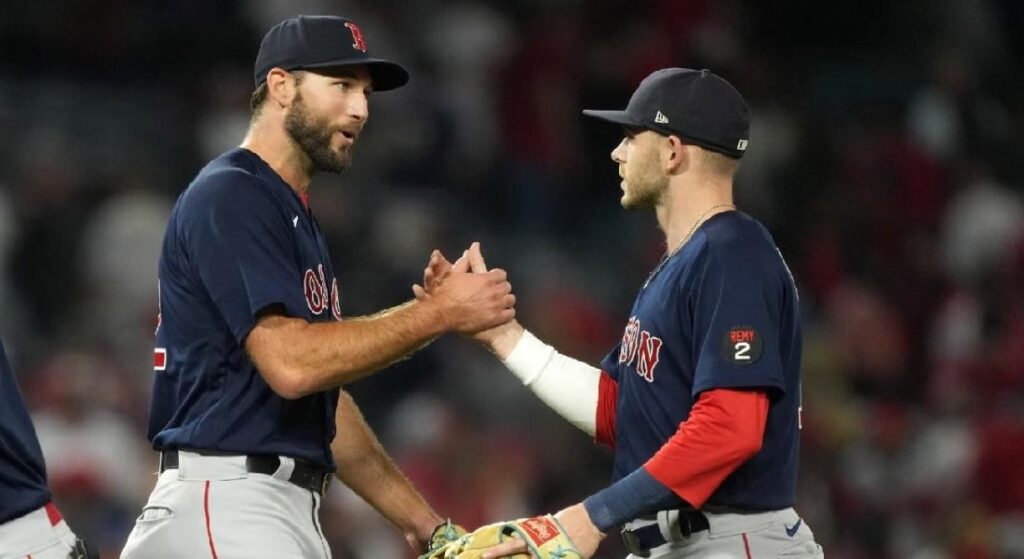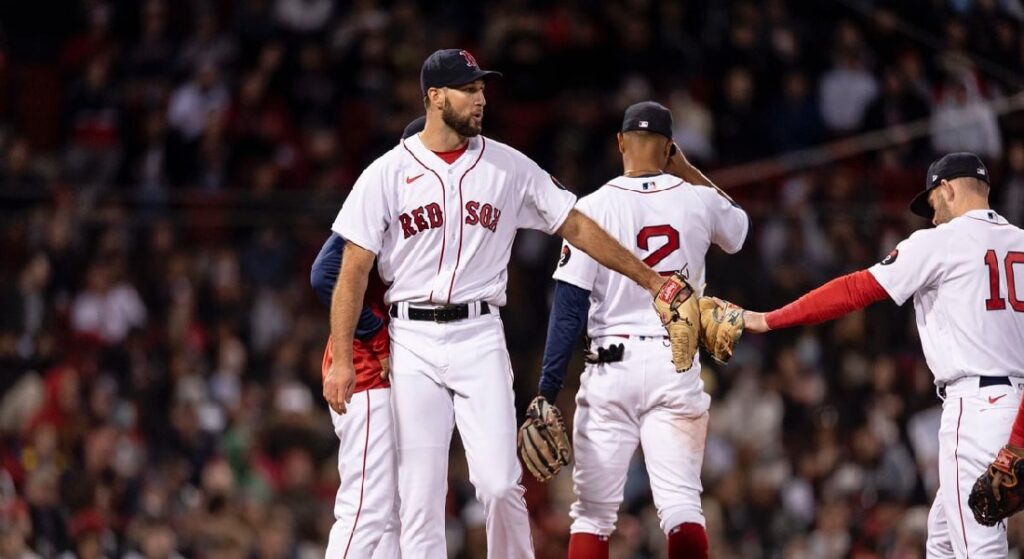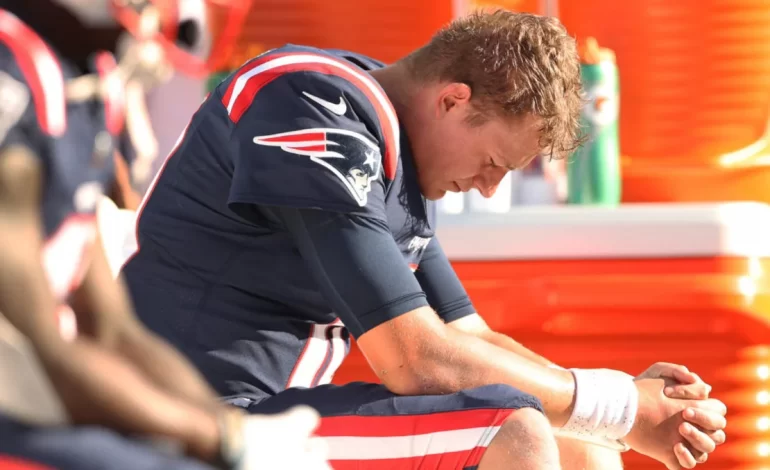Significant free agents. Contract extension and option decisions. Numerous weaknesses. The list goes on. Some say the 2022-23 offseason is the one for all the marbles for Chaim Bloom. He gets it right, or he’s out. Maybe that’s true; maybe it’s not. Regardless, for a fact, the Red Sox are facing their most crucial offseason in years
Bloom’s blind spot during his tenure in Boston, the pitching staff, is inarguably one of those weaknesses. Not only the bullpen, either.
The Red Sox have used 11 different starters this season, going 50-44 when Michael Wacha, Nick Pivetta, Nathan Eovaldi, and Rich Hill start and 21-33 when anyone else starts. With Wacha, Eovaldi, and Hill set for free agency this winter, only Chris Sale and Pivetta are locked into the rotation for 2023.
The free agent market for starting pitching is thin. One of the Red Sox’ nine potential free agents, Michael Wacha, has been one of their best starters, if not their best starter, despite multiple stints on the injured list.
Like they did with Enrique Hernandez, the Red Sox would be wise to chase stability where possible, given the work ahead. Michael Wacha is that for the rotation. Not only that, but he’s found something, turned his career around, and proven he can handle playing in Boston. Finding players who can play in Boston and thrive is a hard thing to do.
Why Red Sox Should Keep Michael Wacha

It’s taken Red Sox’ 2023 free-agent-to-be, Michael Wacha, a long while to get back to being a good MLB pitcher.
From 2016 through 2021, Wacha had a 4.62 ERA with a 4.37 FIP and 89 ERA+ over 138 games. Among pitchers with at least 600 innings pitched in that time, his ERA was the 6th worst, and his FIP was the 24th worst.
The 31-year-old found something during the last six weeks-ish of the 2021 season with the Tampa Bay Rays. From August 20, 2021, to October 3, 2021, the Texas native pitched to a 3.20 ERA/3.14 FIP and held opponents to a .193/.234/.331/.565 slash line against.
Michael Wacha’s late-season success has translated for the Red Sox without a hitch. In 21 starts so far in 2022, Wacha has a 2.70 ERA/3.64 FIP/155 ERA+ with a 1.05 WHIP over 120 innings. He’s walked 30, struck out 97, allowed 12 home runs, and batters are hitting .220/.273/.351/.625 against him.
Boston is 15-6 in his starts.
Among Red Sox starters, Michael Wacha ranks second in innings (behind Pivetta) and quality starts (nine); third in starts and pitches per start (86); first in innings per start (5.7), ERA+, WHIP, FIP, and in team winning percentage (.714). He has the Sox’s only shutout and has allowed the fewest home runs.
Among MLB starters with a minimum of 120 innings pitched in 2022, Wacha ranks ninth in strand rate (81%), 12th in ERA+, 15th in ERA, 19th in Win Probability Added (2.66), 22nd in WHIP, 25th in home runs per flyball (9.2%), 28th in RA-9 WAR (3.9), 34th in walk rate (6.3%), and 41st in FIP.
How Is He Doing It?

Michael Wacha is not missing many bats (81% contact rate), but he’s limiting hard contact (77th percentile hard hit), isn’t walking many batters (72nd percentile walk rate), and strands runners at a high clip when they do reach base.
His signature pitch, the changeup, is the seventh best in all MLB (minimum 50 plate appearances) by run value. The pitch has a 38.7% strikeout rate (11th) and a 21.5% hard-hit rate against it. Batters generate a .246 expected weighted on-base percentage (33rd) against the pitch.
Wacha’s cutter is 18th best in all MLB by run value. Hitters have a .225 average/.380 slugging percentage/.268 wOBA against his cutter. The sinker, his third-best pitch by run value, has a .218 AVG/.269 SLG/.241 wOBA against it.
The fastball is by far Wacha’s worst pitch by any metric. It has a +3 run value, and batters have a .238 AVG/.494 SLG/.328 wOBA against it with a 44% hard-hit rate.
Red Sox Might Be Wary of Michael Wacha

There are signs that some good luck has aided Michael Wacha’s turnaround 2022 season with the Red Sox and that a “regression to the mean” is coming.
Opposing hitters have a .251 xBA/.423 xSLG/.321 xwOBA against him, and his expected ERA (4.32) is nearly double his actual ERA. Hitters are also barreling up a lot of his pitches (35th percentile barrel rate).
As good as the actual results have been on each of his pitches, the expected results are worse for everything but his changeup.
Despite a .238 average on his fastball, hitters should be batting at a .310 clip against it and slugging .627. Same for the cutter. Hitters should have a .314 average, .535 SLG, and .376 xwOBA against it. The pitch has a 37% hard-hit rate against it. Wacha’s sinker should be getting hit at a .275/.460/.340 clip.
There is also a question of durability.
Stability for the Future?
The Red Sox pitching staff desperately needs stability and reliability. Yes, Michael Wacha is second in innings and third in starts on the Red Sox, but it’s only 120 innings and 21 starts. (That says more about the current state of things than it does about Wacha.) Wacha hasn’t pitched more than 126.2 innings in the last three full seasons and hasn’t made 30 starts since 2017.
However, it might still be worth it for the Red Sox to bring Michael Wacha back for 2023.
Nobody should expect Michael Wacha to be more than a number four starter as long as the Red Sox front office does their job. And Re-upping Wacha could also be cheaper than re-signing Eovaldi. Taking the risk of offering Nate the $18-19 million qualifying offer doesn’t seem wise, seeing as how the Sox need every penny they can spare. I’d give Wacha a raise to $10 million per season over maybe two-three years, potentially saving close to $10 million for more important upgrades.
The Red Sox have their work cut out for them this winter. We’ll see if they think of Michael Wacha as highly as some of us fans do.
Finding players who can thrive in Boston has to count for something. Right, Chaim? Right?
For daily Red Sox coverage, follow me on Twitter. For more MLB coverage, follow @BellyUpBaseball and check out Belly Up Sport’s other MLB content.






